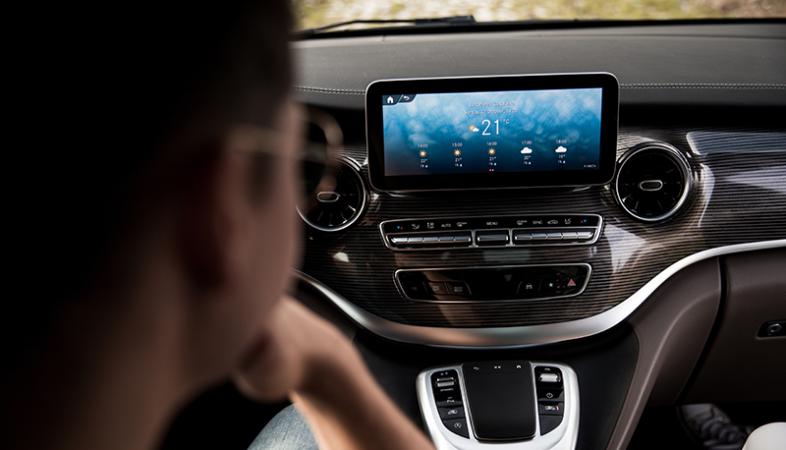Using road weather services to improve driver safety
Adverse weather creates plenty of trouble for drivers around the world (source: US DoT FHWA):
- On average, 20 – 25% of all road accidents are weather related
- There are more than 1.2 million weather-related accidents each year in the U.S. alone
- About 25% of the non-recurrent delay on U.S. highways is due to snow, ice, and fog.
These statistics show that common weather phenomena have a surprisingly big impact. Motorists make adjustments before and during trips based on perceived weather and weather forecasts. However, they rarely cancel trips because of the weather and just drive slower instead.
By combining today’s connected car capabilities with the latest advancements in hyper-local and timely weather and road weather predictions, there are promising opportunities to improve safety, efficiency, and convenience for everyone on the road.
How can road weather technology mitigate weather risk?
We have a three-step-approach involving various road infrastructure stakeholders.
1) Observe. Before you can act or even plan an action, you need to know what is happening on the roads, and there are as many solutions as there are weather conditions. Decisions are based on accurate and reliable measurements, so knowing the baseline is key to finding a successful solution. Learn more about our ground transportation solutions.
2) Plan and take action. With a solid understanding of conditions, you can plan and take action. The key to successful road maintenance is executing in a timely and proactive manner, at the right location, using the best treatment (snow removal, de-icing etc.). Of course, cost-efficiency and sustainability are essential.
Vaisala offers a broad set of digital solutions and decision-support systems to help with this work and to reach safety, efficiency and sustainability targets. Learn more about our digital and visualization offerings as well as the Xweather Horizon, the first-ever observation-driven digital offering designed specifically for the ground transportation industry.
3) Stay informed and anticipate. The best way to keep all drivers informed is by taking advantage of smart technology. The onboard sensors and systems on connected vehicles gather huge amounts of online data such as real-time traffic, road incidents such as accidents, and weather-related phenomena from wipers and braking systems. Combining on-board sensors with cloud based data processing as well as dynamic content will provide a powerful combination to increase driver safety.
How can we start using more road weather technology today?
Despite its availability, very little connected vehicle data is being used. Most drivers see just the ambient temperature reading in the dashboard. There are various possible reasons for this, but there are three ways to make the technology more available and useful for drivers and stakeholders alike:
- Align the interests, capabilities, and responsibilities of all stakeholders.
- Increase communication between the driver and road operator: Drivers are responsible for their actions and adapting to environmental conditions, operators are responsible for road infrastructure safety.
- Leverage business interest to provide such solutions for a large number of automotive suppliers including software companies, such as navigation and map providers.
Connecting to actualize technology
This is the mission we have chosen at Vaisala:
- First, we are set to produce the actual content – precise and timely road weather information – from our proprietary road weather modelling engine. This content is then made available for drivers through an automotive DaaS concept.
- Second, we want to be active in connecting the relevant players in the value chain, starting from the OEMs and reaching out to various navigation and map providers as well as application and software developers. In parallel to the automotive industry, we work with infrastructure operators and maintenance companies to understand the impact of their actions. Ultimately, it is the right-now and potentially post-treatment road conditions the driver needs to know.
Road weather services and driver safety
Our road weather service combines both atmospheric weather and driving condition forecasts. This service covers Europe and North America with the capability for global extension. With this information available, drivers can adjust their travel schedule, take an alternate route, or reduce speed for their own safety and convenience.
In addition to hyper-local atmospheric weather forecasts, road weather forecasts predict current conditions ahead (e.g., standing water, ice, snow). The model also takes into account different phenomena for slipperiness, poor visibility, and other weather-related conditions affecting driving safety.
Real world examples
One way a road weather forecast can improve safety is by informing drivers about hazardous road conditions. For example, weather-based navigation, dynamic routing and weather warnings are transmitted through a vehicle’s digital cluster and infotainment system, or by adapting vehicles essential functions (e.g. ABS, ESC, suspension) in real time. A driver can respond by slowing down to avoid hazards, or a vehicle navigation system can dynamically re-route towards safer and drier routes.
A recent development is increasing fleet-based observation data to improve prediction granularity and accuracy. This means that braking events, fog light or wiper data from your vehicle could help to provide quality road weather information for other nearby drivers.
We are excited about the capabilities and potential of road weather services – to preserve lives and assets, enhance communication, and facilitate productivity. That is where the rubber meets the road.
Sources used:
US Department of Transportation Federal Highway Administration: https://ops.fhwa.dot.gov/weather/q1_roadimpact.htm




Add new comment